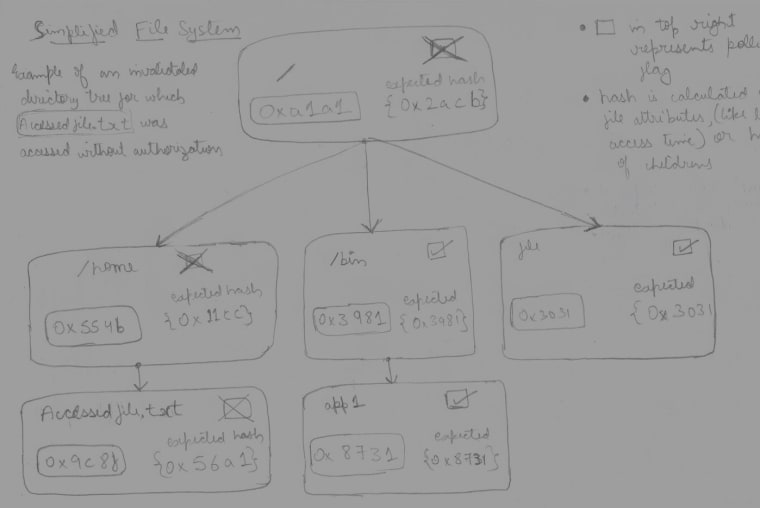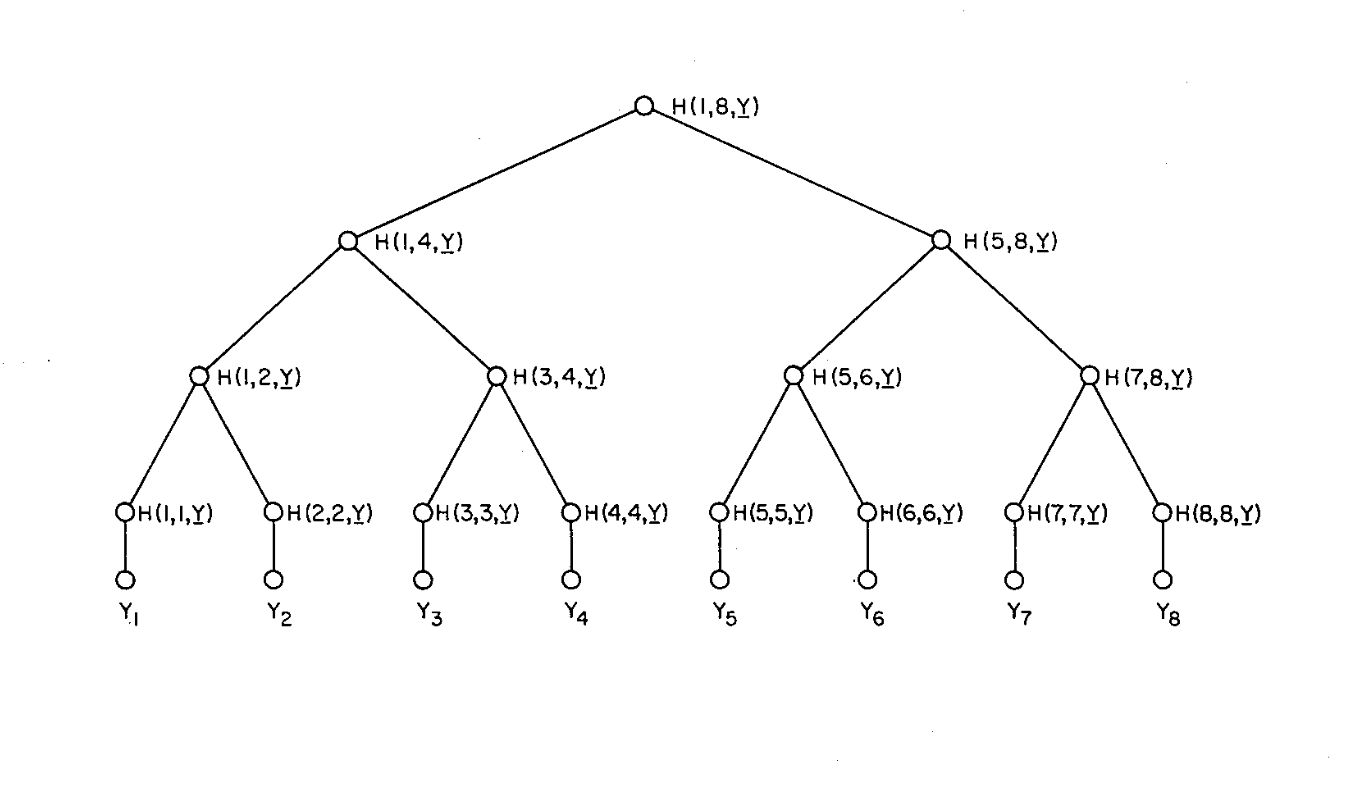6 min to read
Merkel Trees and computer memory
Merkel trees are data structures which store hashes insted of data. Can we use them in file systems

Introduction
Computer memory is usually implemented as a file system. While tampering with data is easy to detect, unauthorized access to memory is a more complex task falling within the domain of Intrusion Detection Systems (IDS). Most intrusion detection systems focus on analyzing network traffic or using machine learning techniques to identify suspicious patterns, we explore if we can employ merkel trees for this task.
If unauthorized memory access cannot be detected, users would never know
that the system was compromised. Detecting tampered files is
straightforward: you can hash the contents of a file, and if the hash
changes you might conclude that the file changed. However, detecting
memory access is more complicated. Although Linux keeps track of the
last access timestamp, available via the stat command1, it only
tracks file accesses that use the read() syscall2.
Merkel Trees
Merkle trees are a data structure in which hashes are stored rather than data. Leaf nodes store hashes of particular data blocks, while other nodes store hashes of their children. Merkle trees are widely used in blockchains for their ability to detect data tampering. They provide a robust mechanism to detect tampering in multiple distinct data items. If any data item in a leaf node changes, the whole tree becomes invalidated because it changes the hashes of all nodes up the tree.
 Fig. 1: A Merkle tree is a data structure in which each node contains a
hash. All non-leaf nodes contain hashes of their children, and all leaf
nodes contain hashes of the underlying data.
Fig. 1: A Merkle tree is a data structure in which each node contains a
hash. All non-leaf nodes contain hashes of their children, and all leaf
nodes contain hashes of the underlying data.
Merkel tree as directory tree
Now, what we want to do is to augment the directory tree as a merkel tree. To be exact the inode structure (See inode doc for more details).
Doing this would make us have hashes for children in directory tree. And the benefit of that is whenever the child inodes change, the current inode would change. And there’s 2 fields that each node would contain, the last seen hash (expected hash) of it’s child and the current hash of the same child. And when the current hash changes to a different value from expected hash, then we can imply that the child inode changed.
But one question is that if memory can be accessed bare metal, then the protections done in software doesn’t really make any sense. One possible solution to this problem is employing encryption.
The encryption should be performed in hardware, and the memory access system calls should define protocols for decrypting the underlying memory. The same system call would update necessary variables of the file in question, such as access time. The memory access system call needs to be implemented so that when one accesses memory, the data is decrypted and other functions are performed.
Below is a detailed description.
Architecture
File system in most operating systems follow a hierarchical structure. We augment this with a Merkle tree, where a node is attached to each file in the file system. These nodes form a Merkle tree, where each node contains the hash of its children (in the case of non-leaf nodes) or the hash of the file data (in the case of files). Additionally, a pollution flag is attached to each node to detect illegal access.
Each node will also has an expected hash, which is the hash of the node when the subtree below that node was last valid.
Working
The pollution flag is set if expected_hash != hash, which occurs only
on illegal access. I will explain this in a moment.
When a user or process requests memory, it will go through the memory access system call, requiring authentication. Once the authentication is successful, the underlying data is decrypted and returned, the access time is updated, and all the hashes up to the root are updated along with the expected hash (note that the expected hash changes on authorized access). The tree remains valid.
If the authentication fails, the memory is not returned, but the access time changes. Consequently, when the tree is re-evaluated, the hash of this node changes since it incorporates the access time, but the expected hash remains the same, setting the pollution flag for this node.
Since the parent of this node uses its hash, the parent’s hash also changes. However, its expected hash remains the same, leading to its invalidation. This process continues up the tree, invalidating the whole tree.
The benefit of this approach is that all other nodes remain valid. If one tries to determine which file was accessed and the timestamp, it is easy to identify the exact file by following the invalid nodes from top to bottom.
